Notes
Pictures Worth Noting: Extreme Symbolism and Arresting Juxtapositions
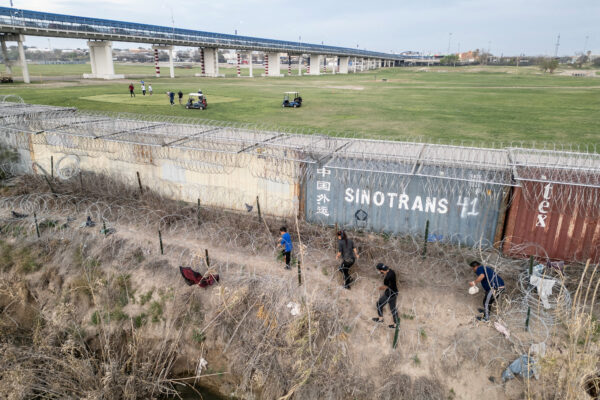
Migrants walk on the banks of the Rio Grande river to find a way to enter the U.S. as golfers play on the other side of the shipping container fence in Eagle Pass, Texas, U.S., February 27, 2024. REUTERS/Go Nakamura
By Michael Shaw
As I navigate endless galleries of photos across news sites, magazines, and social platforms, I encounter countless images that have stayed with us despite not making it to our main features. These are the photos that, for one reason or another, don’t find a place in our image posts or our 20-30 annual “Chatting the Pictures” videos. Yet, they linger in my mind for their poignant callouts, subtle storytelling, or the emotions they evoke.
I realize that these images deserve more than just a fleeting glance. They deserve to be seen, appreciated, and reflected upon. That’s why I’m thrilled to introduce a new feature in our newsletter: “Pictures Worth Noting.”
Here, we’ll share photos that capture themes, trends, or political and media activity we’re otherwise missing. It’s our way of paying respect to the art and practice of photojournalism and the myriad ways it speaks to us beyond the social media swipe-and-go.
Extreme for the Disorientation
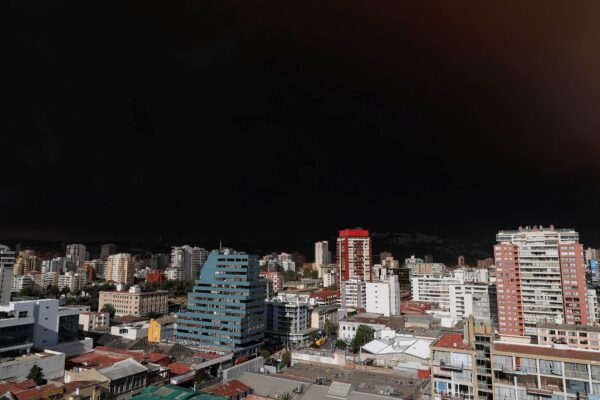
Smoke from wildfires darkens the sky above Viña del Mar, Chile, on February 2, 2024. Rodrigo Garrido / Reuters via The Atlantic
Most images of cities and towns beset by wildfire smoke offer up that red/orange Martian sky. This pic from Viña del Mar, Chile, is dramatically different. If you look more closely, you see that the darkness is concentrated at the top of the image and fades as it approaches the horizon, indicating the source of the smoke is likely at a distance rather than directly above the city. But the portentiousness of the scene makes it easy to miss.
While domestic media doesn’t concern itself with heat and fire until fire season, events in the Southern Hemisphere present the next iteration of the climate emergency. The contrast between the dark sky and the brightly lit buildings, the “day turned to night,” freaks me out.
Extreme for the Scale
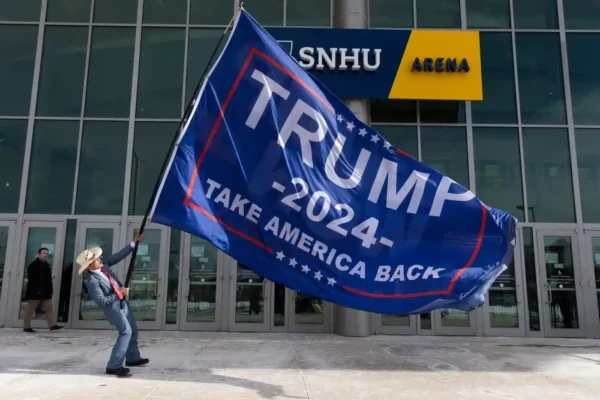
Manchester, New Hampshire: A supporter of Donald Trump outside the SNHU Arena before a campaign rally. Photo: Michael Reynolds/EPA via The Guardian
What’s most interesting about this photo is why it was chosen by The Guardian’s Photos of the Weekend during the New Hampshire primary. It couldn’t have been because of how phallic it is, could it?
What else hit me:
The cowboy hat in New England.
Between the suit and the building (clashing with Trump’s rebel vibe), how corporate this feels.
On the other hand, how these monster flags will always reprise Jan 6.
The passive observer on the left there. Is that us?
Extreme for the Power to Imagine
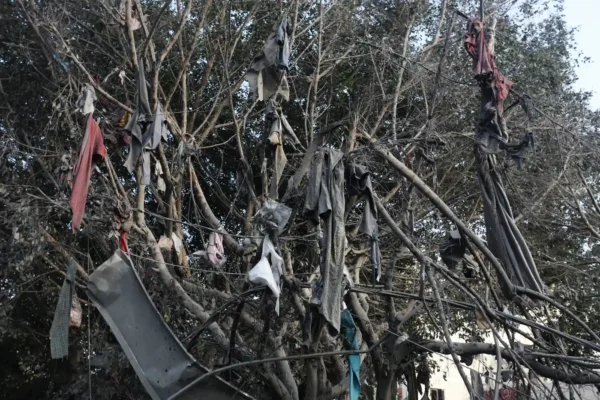
Rafah, Gaza Strip: Clothes belonging to residents of nearby buildings are strewn across a tree by the blasts from the Israeli bombardment. Photo: Hatem Ali/AP via The Guardian. October 27, 2023
Gaza’s streets overflow with images of blood, agony, and ruin. Yet, this photo strikes a different chord. Can you feel the explosion’s force that flung these clothes into the barren, twisted tree? Notice the drained-out colors, leaving only shades of despair—the faded reds, a lone green, and the striking contrast of the woman’s white top with all that gunmetal grey, including an actual piece of metal twisted around a branch. It’s a visceral expression of the chaos, a visual echo of the extreme violence that has torn through so many lives.
In any other scene, clothes draped over a tree might evoke images of laundry basking in sunlight. Here, though, they reveal a grimmer truth—not laundry, but the shredded fabric of society.
And Some Significant Juxtapositions This Week
It’s automatic commentary if the headline is Trump’s photo-op at the border, and the imagery more than goes its own way. These two offerings are potent statements and, more categorically, excellent juxtapositions.
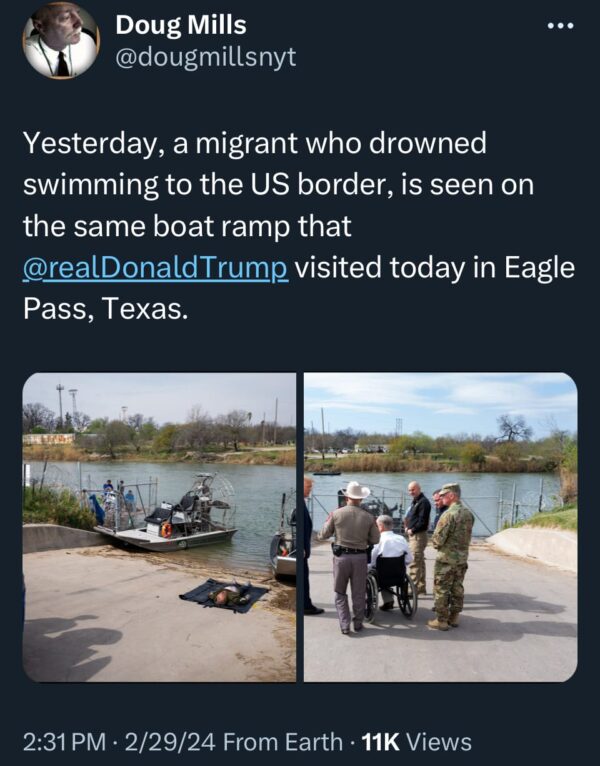
Mills uses the technique to create a simple but brilliant allusion to guilt by association and cause-and-effect in the case of Governor Abbott. His militarized buildup of the border with his floating walls and razor wire has pushed migrants towards more dangerous crossing points. More audaciously, a mother and her two children drowned in January near Eagle Pass as the result of Abbott’s Operation Lone Star blocking the Border Patrol from trying to rescue them. It speaks volumes that this Supreme Court cut down the operation.
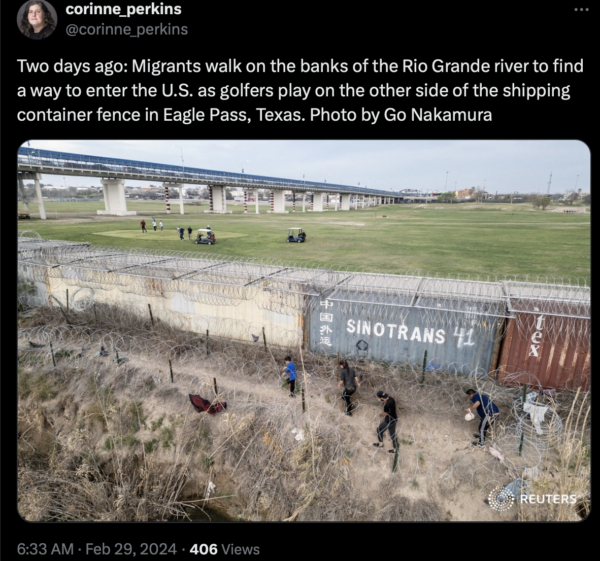
The photo by Go Nakamura deserves its own seminar. The boundary belies how complicit we are in the immigration crisis, from decades of misguided policies in Central America that enabled the corruption and violence these refugees are fleeing to the extreme politicization of the issue to the cruelty of forced detention and family separation of the refugees. It also could nicely facilitate a discussion about how migrants and immigration fuel the economic health America is enjoying. Not to mention all those unfilled jobs that would power this economy even more.
As always, I’m interested in what you’re seeing.
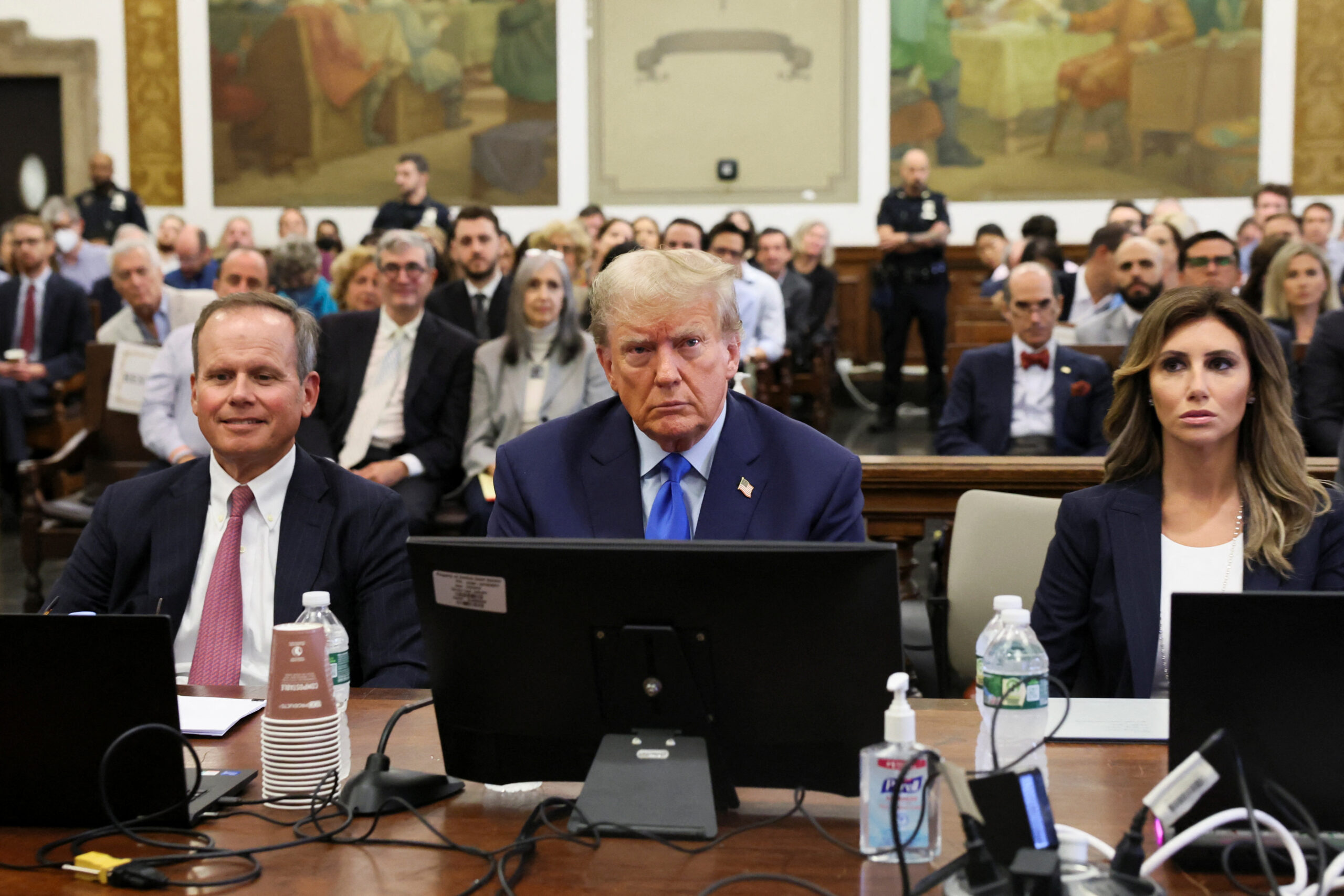
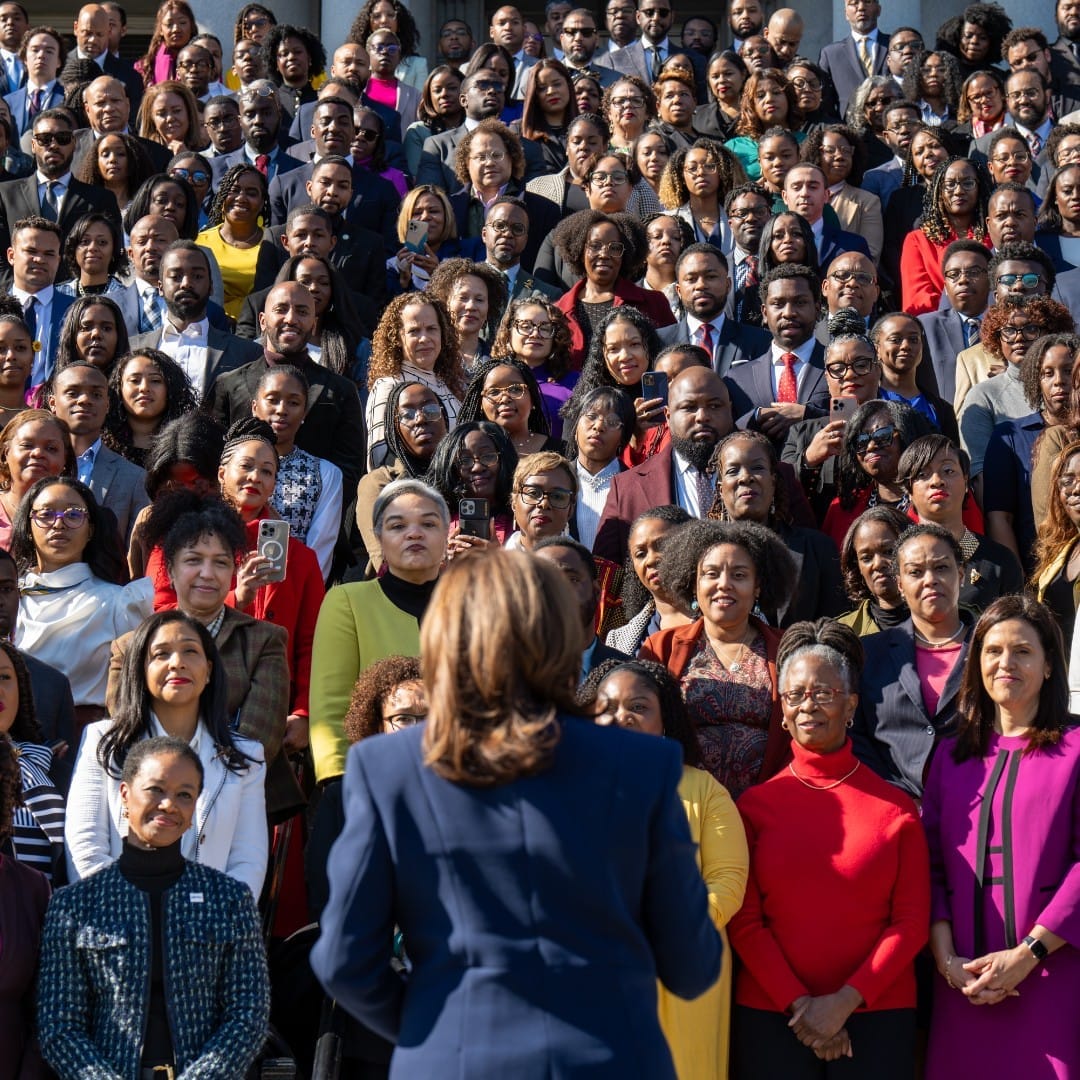
Reactions
Comments Powered by Disqus